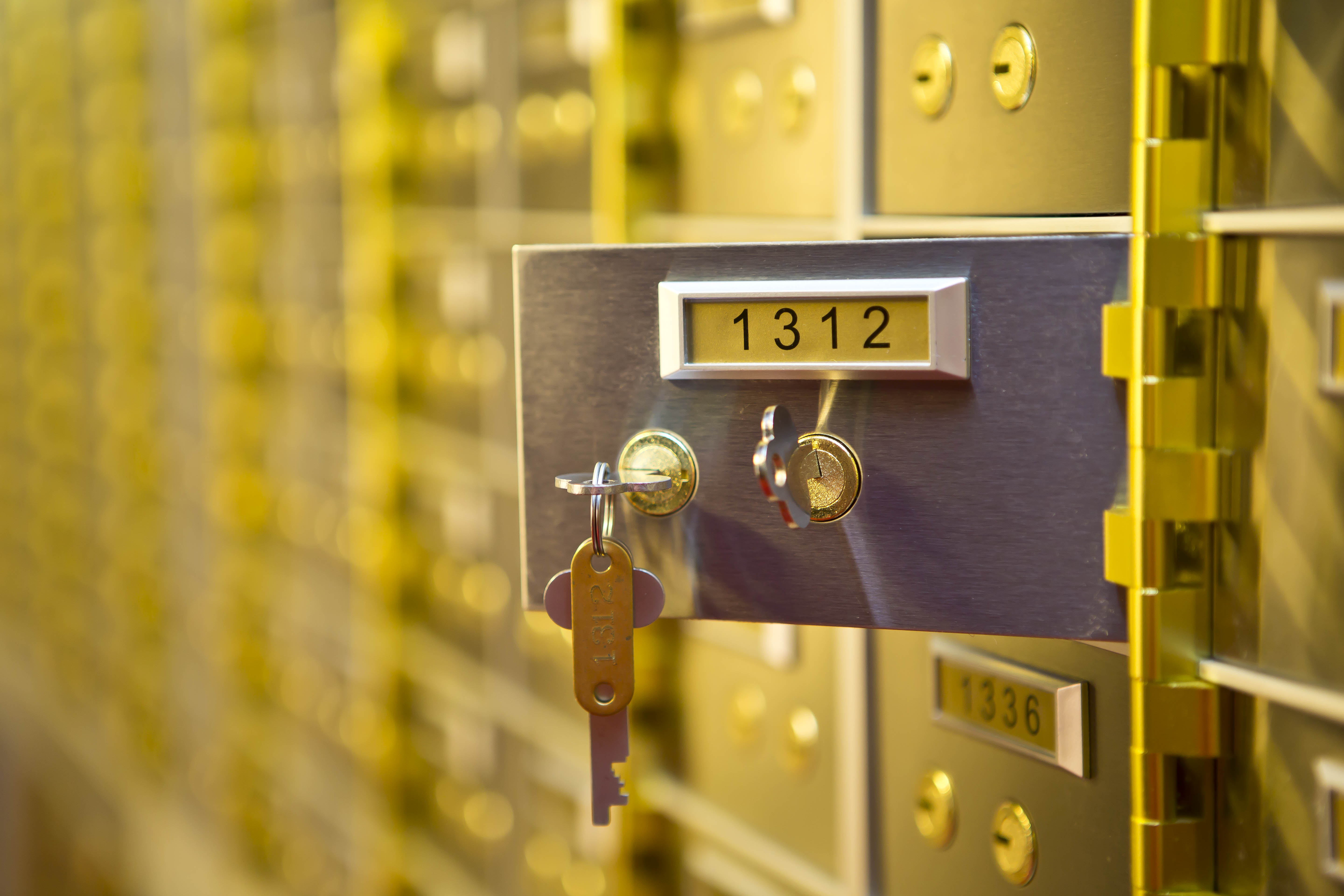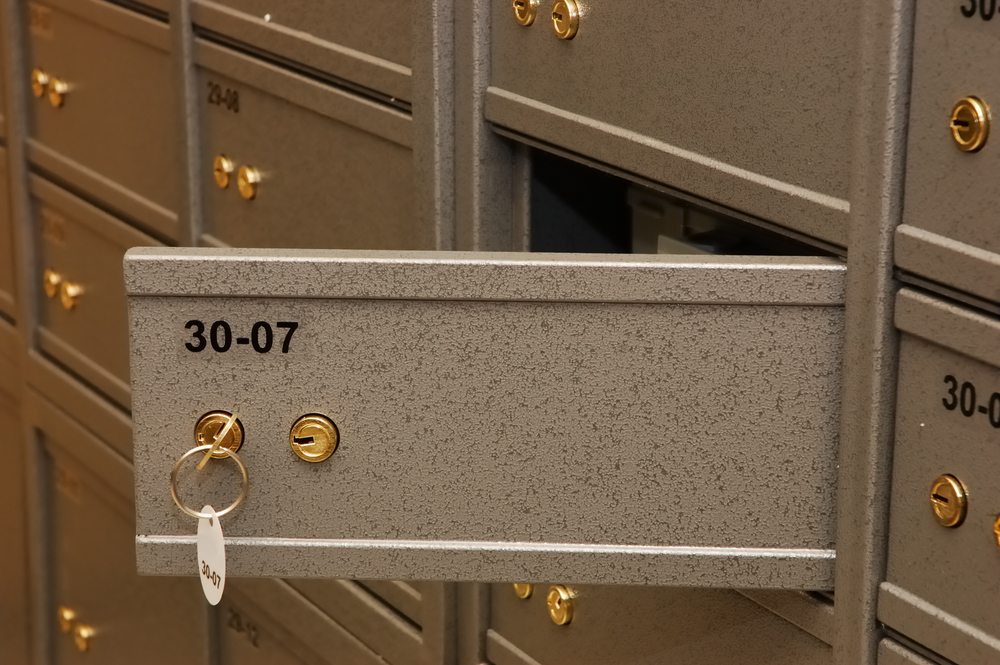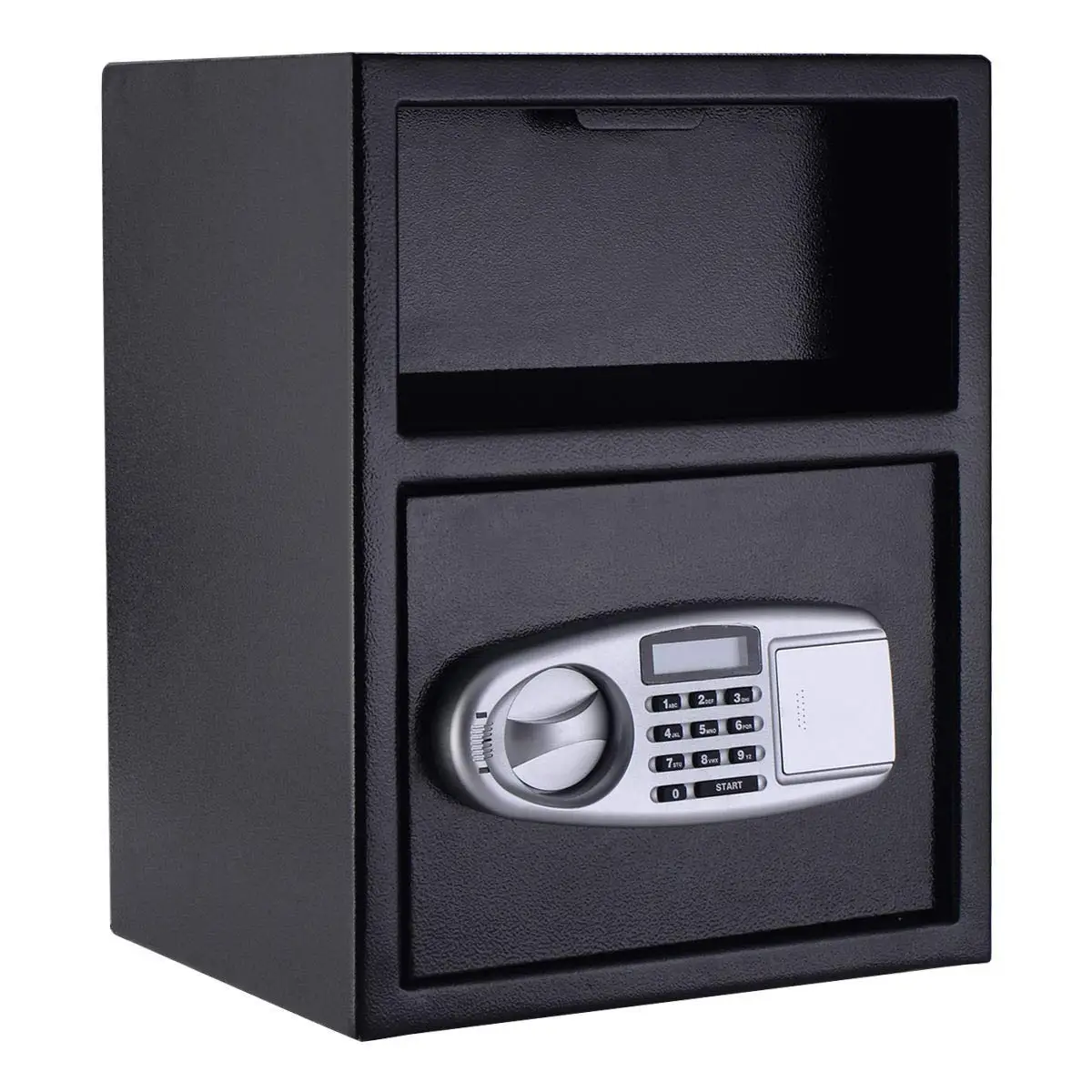
- Note: This article is part of our Basic Banking series, designed to provide new savers with the key skills to save smarter. We spoke with numerous banks around the country and found that annual safe deposit box prices can range from as low as $49 for a 3-by-5-inch box to as high as $360 for some 10-by-10-inch options.
- A safety deposit box is a special storage compartment you can rent at a bank. You can use it to store important documents and items that you do not feel safe keeping in your home. You may even decide to store some of your spare cash in the safety deposit box in case you ever hit a rough spot.
- Lovndi Electronic Security Safe Box, 0.17 Cubic Feet Digital Deposit Box for Home Office Hotel Business, Lock Box for Cash Jewelry Storage, Black 4.3 out of 5 stars 489. $32.99 - $34.99 #5. Stalwart 65-E17-B Electronic Deluxe Digital Steel Safe, Black 4.4 out of 5 stars 349.
Where do you keep your birth certificate? Passport? Maybe you are finding it harder to trust the bank with anything these days, and even have your cash stuffed in the mattress. However, there are still plenty of good reasons to keep some of your most vital documents locked up under the watchful eye of the bank.
There are some drawbacks, of course, to having your access to important items and papers somewhat restricted and only accessible during bank hours, so you need to know which things to keep close to home and which ones you can manage without for a few days.
Cost of Using This Box. The price for a Bank of America safe deposit box varies based on its size, and fixed rental fees are charged on an annual basis. – The rent for the smallest box ranges from $15 to%25; – A medium box costs $40-65 each year; – The biggest box is priced between $185 and $500. A medium box measures 4 by 10 inches and is 12 inches long. The average cost is between $40 and $65 dollars. The largest box offered is 15 by 22 by 22 inches and usually costs between $185 and $500 dollars. Other Fees for Safe Deposit Boxes.
Some are quick to point out other problems that can arise when you don’t take matters into your own hands, but we will help you make your own choice and decide if a safe deposit box at least beats the mattress and a plastic filing cabinet for security, or at least point you to some basics for safer storage within your home.
Opening a Safe Deposit Box
Most banks and credit unions offer the service, and may even give discounts to existing customers, so start with your current bank. It is really important to plan ahead and give permission to someone you trust to access the safe deposit box or at least have an executed power of attorney that allows them to easily get to the contents.
This is especially important in case of death so that important papers and heirlooms can be accessed without delays. Consult with an attorney to determine state laws that affect the ability of your loved ones to gain access if you have reasons for not granting them access while you are alive.
The annual cost will typically range anywhere from $30 to $75 and you should also contact your insurance agent because the contents are not covered by the generous new $250,000 in FDIC coverage that you get, and most causes for loss within the bank will not be deemed to be the bank’s responsibility. Because neither the bank nor the insurance company will likely cover flood damage, make sure to put all contents in sealed plastic bags.
What You Should Put in the Safe Deposit Box
A good rule of thumb to keep in mind that is grounded in common sense is to view your safe deposit box as the repository for stuff that you really need, but will not likely ever need on a moment’s notice. Items that are a pain to get replaced such as birth certificates and other family records definitely belong here.
Another important item to remember for insurance purposes is a videotape of your home’s content for insurance purposes, and a copy of this video definitely belongs in your safe deposit box. Contracts, stocks, bonds, certificates of deposit, original deeds to property, collectibles and rare jewels are also commonly kept in safe deposit boxes. If your grandmother gave you a pouch of diamonds or if you have negatives from your honeymoon that aren’t safe for the film lab then lock it all up at the bank! For that matter, you can put just about anything you want in the box.


What Does Not Go in My Safe Deposit Box?
Safety Deposit Box Costs

There are plenty of things that obviously do not belong in the safe deposit box that we do not need to go into for the sake of brevity i.e. food, pets and cash you are hiding to dodge paying taxes, although the latter is certainly a common but unethical choice.
You certainly can place copies but should never put originals or your only copy of medical care instructions, burial preferences or original Power of Attorney documents. Further, if you live your life like you are starring in Bourne Supremacy (or simply have friends and family overseas that you would visit in an emergency), you definitely don’t want your passport locked up overnight, let alone a three-day weekend.
You Don’t Understand Me…There Is No Way I Am Keeping My Valuables at the Bank
Would you rather just bury it all in the backyard? If the thought of a bank robbery or putting your great-grandfather’s watch in a dark box somewhere makes you simply too uncomfortable, then it is time to shop for a fireproof safe and make sure that you get adequate insurance coverage to keep these items in your home. If you purchase an inexpensive safe, you might end up regretting the move as many of these safes only withstand an hour in a fire – not good if your videotape of the home’s contents gets melted in a fire in said home.
However, there are some heavy duty safes that can only be hacked into by Tom Cruise that will also give you the necessary levels of protection (UL125) to protect your computer data. You can check here and here for more information on choosing a fireproof safe, and make sure that you don’t buy a safe that is too small to contain any gold bars you plan on purchasing in the next few years.
So, remember to either get the safe deposit box along with a separate insurance policy, or do some research and get a fireproof safe that will protect digital information and film negatives (not just your paperwork) and insure the contents. Make sure that you are protected – this is not an item to put on the “vague list of important stuff to eventually take care of down the road.”
Safety Deposit Box Cost A Month
Sign up for Mint today
Safety Deposit Box Cost Chase
From budgets and bills to free credit score and more, you’ll
discover the effortless way to stay on top of it all.